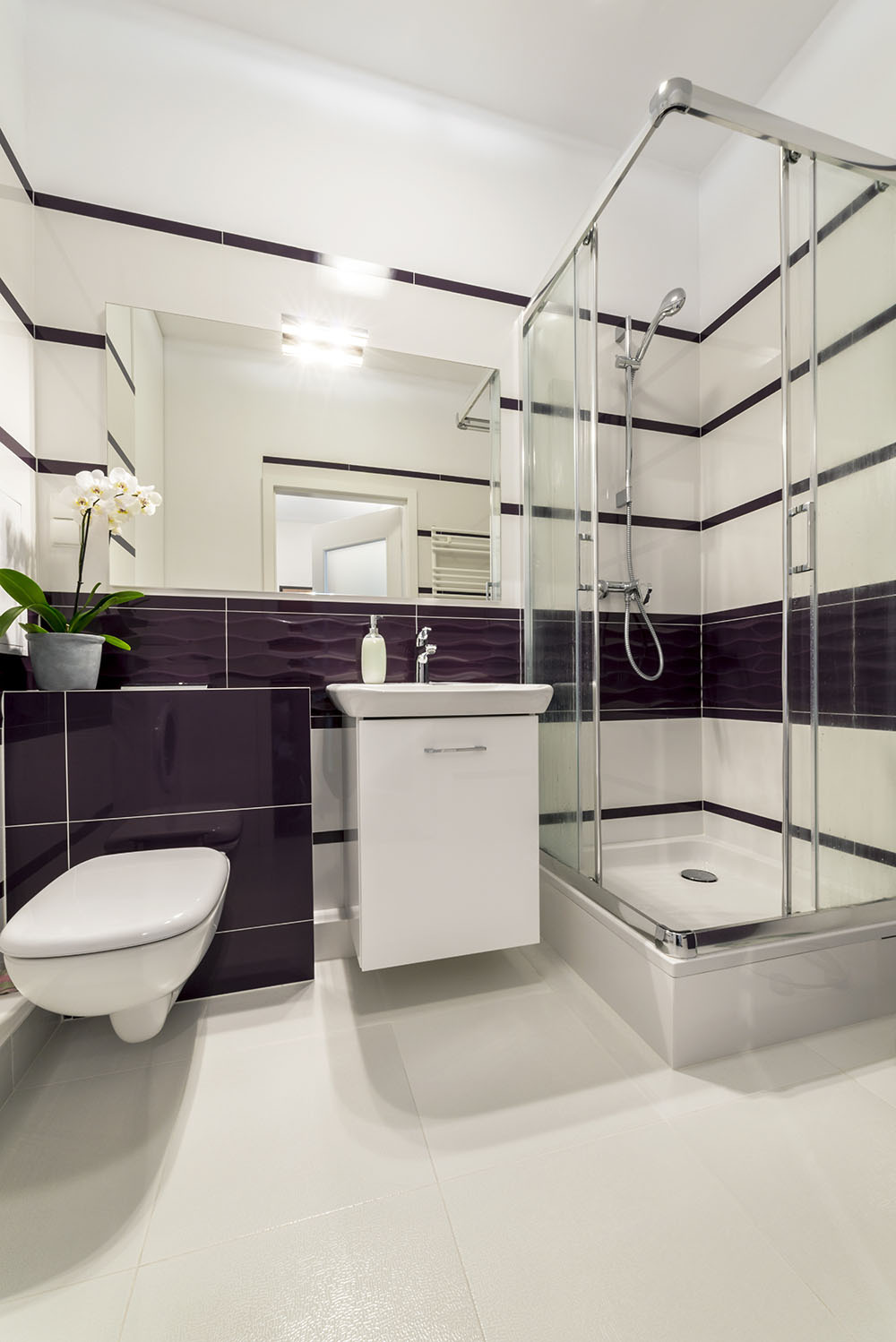
Choosing the right shower enclosure can be a big challenge, especially for people who do not have the appropriate knowledge. Enclosures differ from each other not only in size or shape, but also in the material used for their production. So what should you pay attention to in order for the product to meet all our requirements?
Shower enclosure fillings
There are many types of shower enclosures available on the market, which differ from each other, among other things, by their filling. The most popular is the glass shower enclosure. It is made from safe and solid tempered glass, which does not exceed 8 millimetres in the profiled enclosures and 12 in the frameless enclosures. This glass must meet various standards and be highly resistant to scratches, and in case of breaking, it should shatter into small pieces with rounded edges. Sometimes the glass is coated with a special chemical layer, the main task of which is to limit or prevent the buildup of soap scum or lime deposits on the walls.
This is exactly how Anti-plaque works, thanks to which the glass reacts with a special substance, resulting in a coating that makes the shower walls more resistant to mechanical factors. These can also be protective coatings directly applied to the surface of the walls. Many manufacturers use different names for their protections, and they include: Reflex, Vibo Clear, Clean, Glass Protect, etc.
Coloured glass shower enclosure
Fans of non-standard solutions should be interested in a shower enclosure made of glass that is coloured in the mass or has a specially finished surface (satin, patterned, or frosted). It is also worth knowing that the surface of the enclosure walls can also be decorated with patterns that are applied using sandblasting or screen printing methods. Some manufacturers even offer enclosures with pre-applied patterns, and on special order, the walls can be decorated using engraving or fusing methods. The latter involves fusing different types of glass at high temperatures, resulting in original glass patterns.
Another solution is to purchase a shower enclosure with panels made of plastic. It is much cheaper than glass, which is why many people decide to buy it. The surface of this type of enclosure can also be protected against deposits, which is very convenient for their owners. What is also important is that polystyrene panels often have a special pattern imprinted on them, which effectively camouflages lime deposits. The walls are often about 2 millimetres thick and are merely a filling element.
A great advantage of this type of filling is the fact that they can be cut with simple tools, which is particularly useful when installing under a sloped roof or on an uneven wall. However, it should be noted that polystyrene is somewhat less resistant to scratches and various types of mechanical damage, and it shatters into sharp pieces. Although it does not cost as much as glass, it is distinguished by a high resistance to impact and a high level of flexibility.
Protective coatings in shower enclosures
Many manufacturers, in the interest of customer satisfaction, cover shower enclosures with special protective coatings. For example, tempered glass can be characterized by its transparency and smoothness, yet under a microscope, certain inequalities are visible. It is precisely on these that contaminants can deposit, which are best avoided. Thanks to special coatings, the glass becomes even smoother, and dirt washes away with water. These coatings also guarantee the ease of cleaning the enclosure - small marks from dried water droplets can be easily removed with a cloth and mild chemical agents.
There are coatings applied by glass manufacturers and then hardened during the tempering process. There is also the possibility of applying treatments cold, thereby creating a homogeneous chemical layer directly bonded to the glass, significantly smoothing its surface. Thanks to such coatings, droplets are repelled from the glass, they do not linger on its surface, and they quickly flow off, simultaneously taking away deposits that do not get the chance to settle into the pores.
Of course, the durability of the coating largely depends on the chemical composition of the water. It is estimated that a non-maintained coating can last from 6 months to even 5 years, and if we take care of it, it can last even 10 years. Preparations can also be purchased on the market that are applied to the doors and walls of the enclosure, increasing the lifespan of the protective coating. This process is not complicated, as these agents often have the consistency of foam. However, it is first necessary to thoroughly clean the enclosure surface of contaminants and accumulated deposits.


















